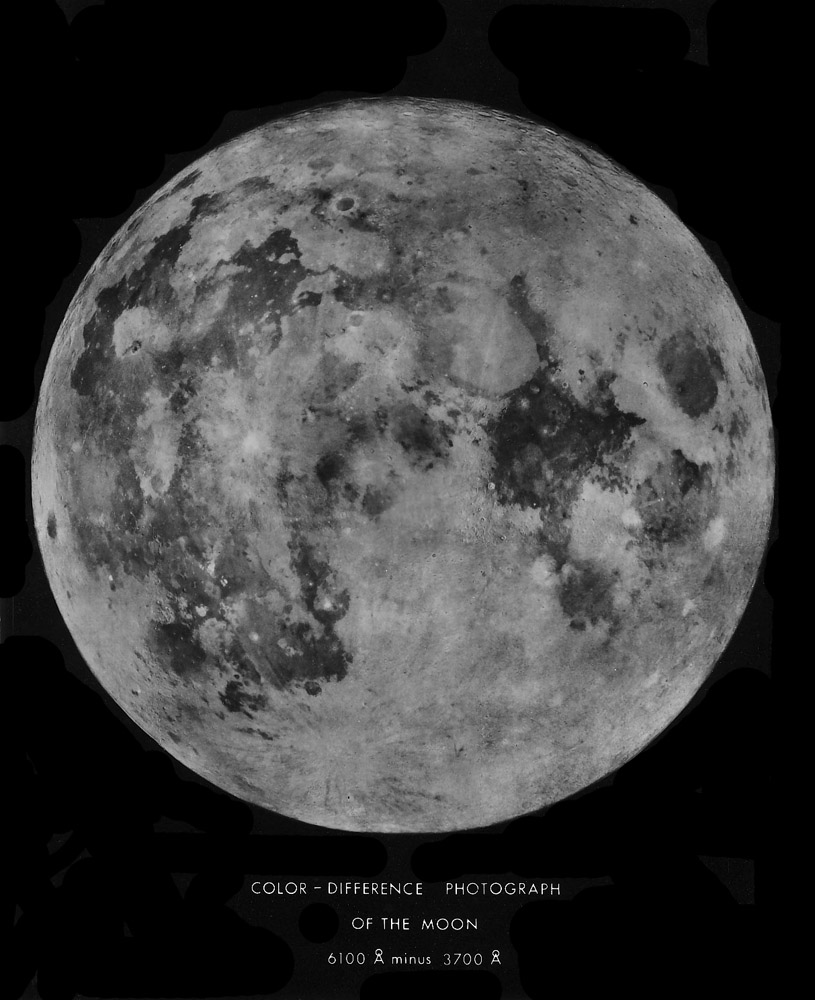July 5, 2009
Colorless Colors

image by Ewen Whitaker
The Moon looks chromatically bland because its colors are too subtle for easy detection. But nearly 40 years ago Ewen Whitaker published an article with remarkable photographs that enhanced the colors so much that the familiar look of the Moon disappeared. Ewen made this image the next year (1973) with the 61" Catalina reflector of the Lunar and Planetary Laboratory. He gave me and others copies but never published it in a scientific paper. By sandwiching together a photographic negative of an image taken through a filter of 0.38 micron wavelength (blue) with a positive transparency of an image made with a 0.62 micron (red) filter, albedo variations disappear. What remains are enhanced color differences, with dark surfaces being relatively rich in Titanium, and bright areas being Ti poor. The highlands have only small variations in their slight abundance of Ti, but as the bright swaths across Mare Imbrium indicate mare lavas have quite variable concentrations. The older flows in Imbrium are Ti poor, as are the maria in parts of Frigoris and northern Procellarum. The young lavas in central wester Imbrium are rich in Ti. This image also shows that the color boundary around Mare Serenitatis actually involves three (or more) colors, and hence lavas of three different Ti abundances. And look at Plato - it is rimmed with low Ti material, presumably highlands ejecta. Surprisingly, few amateurs followed Ewen's lead of using images in two wavelengths to detect color differences, but some, image with sensitive color video cameras to reveal many of these compositional differences.
Chuck Wood
Related Links
EA Whitaker (1972) Lunar Color Boundaries and Their Relationship to Topographic Features: A Preliminary Survey The Moon 4, 348-355 (PDF)
Yesterday's LPOD: No Z
Tomorrow's LPOD: Loftiest Peaks?
COMMENTS?
Register, Log in, and join in the comments.



